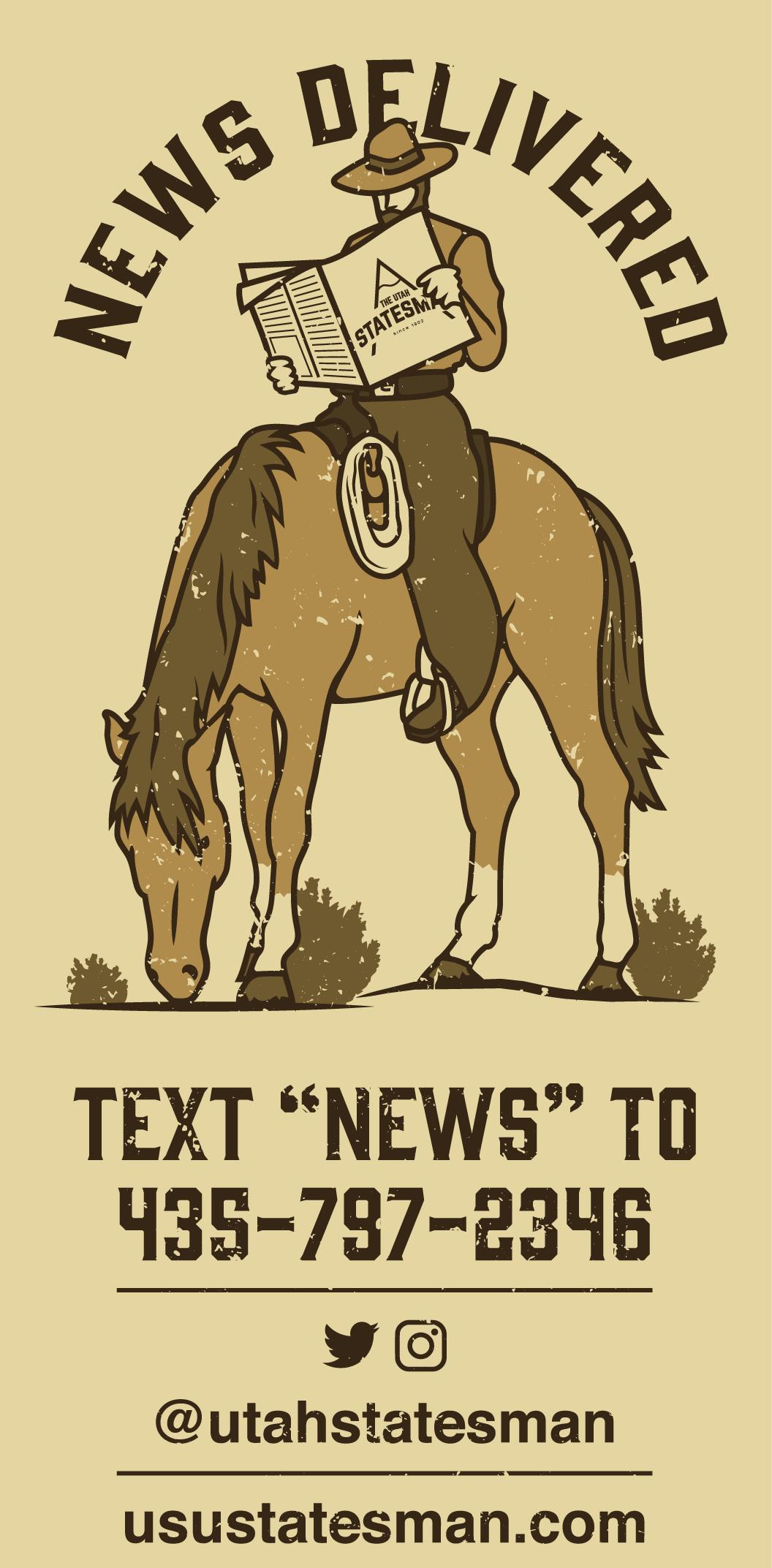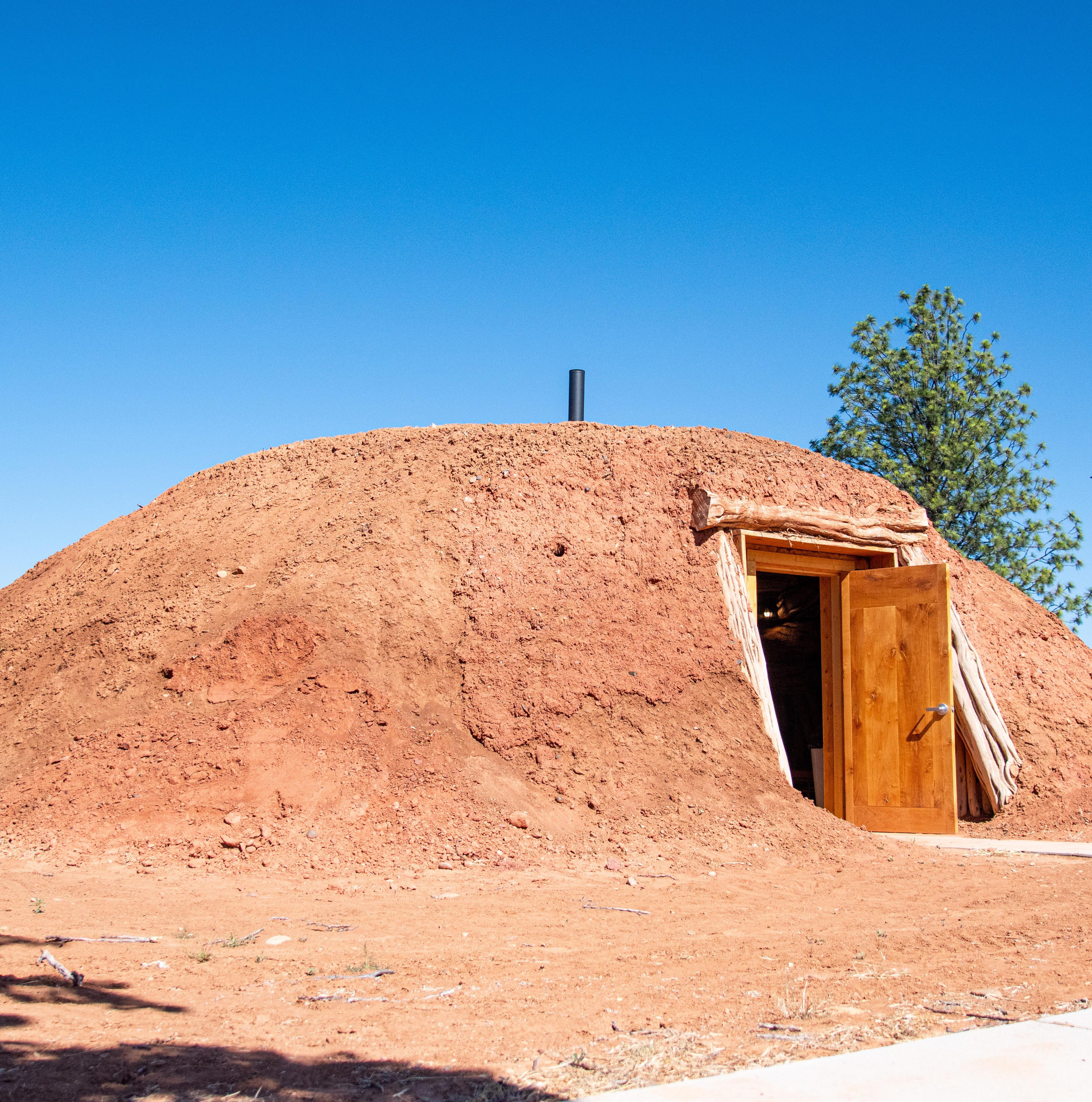




By Aubrey Holdaway STATESMAN REPORTER
During the second week of November, students, faculty and community members gathered at Utah State University’s Blanding campus to celebrate National Native American Heritage Month through a series of events.
Kristian Olsen, senior associate vice president of USU Blanding and Moab, emphasized the importance of the celebration to the campus community in an email to The Utah Statesman.
“One of the distinctive aspects of our campus is that the majority of our students are Native American,” Olsen wrote. “Here, these celebrations hold a prominent and integral role, reflecting the cultural richness and identity of our student community.”
The week’s events were organized by Blanding’s student association and staff and offered a mix of traditional activities, creative workshops and culinary experiences, fostering a sense of connection and cultural pride.
“For many of us who come from the reservation, these activities brought back memories and created a space to feel connected to our roots,” said Manny Manygoats, Blanding’s student vice president.
One event was held each day, Monday through Thursday. The week began with Navajo Bingo on Monday, a cherished game that Manygoats said many students grew up playing.
“It was pretty cool because everyone came out. It brought back a sense of nostalgia for many of us,” he said.
On Tuesday and Wednesday, students tapped into their creativity with a bracelet beading workshop and rug painting.
“It was fun for me because I didn’t know how to bead before, but I learned,” Manygoats said.
The celebration concluded on Thursday with a fry bread night and banquet, featuring on-site dough preparation and a variety of toppings for the freshly made fry bread.
“Everyone came out and enjoyed it,” Manygoats said. “It really brought people together.”
The success of the celebration was the result of collaboration between student leaders and campus staff. While students, including Manygoats and his team, planned and executed much of the week’s activities, campus leadership provided guidance and support.
“Our Director of Student Services, Priscilla Arungwa, and Shilo Martinez, Student Life Coordinator, take the lead on planning and implementing the celebrations that happen on campus,” Olsen wrote.
The planning process also included partnerships with local organizations, such as the Utah Division of Indian Affairs. This year, the campus collaborated with UDIA to bring a powwow to Blanding at the beginning of the month.
“While UDIA holds this celebration annually, it has traditionally been centered along the Wasatch Front,”
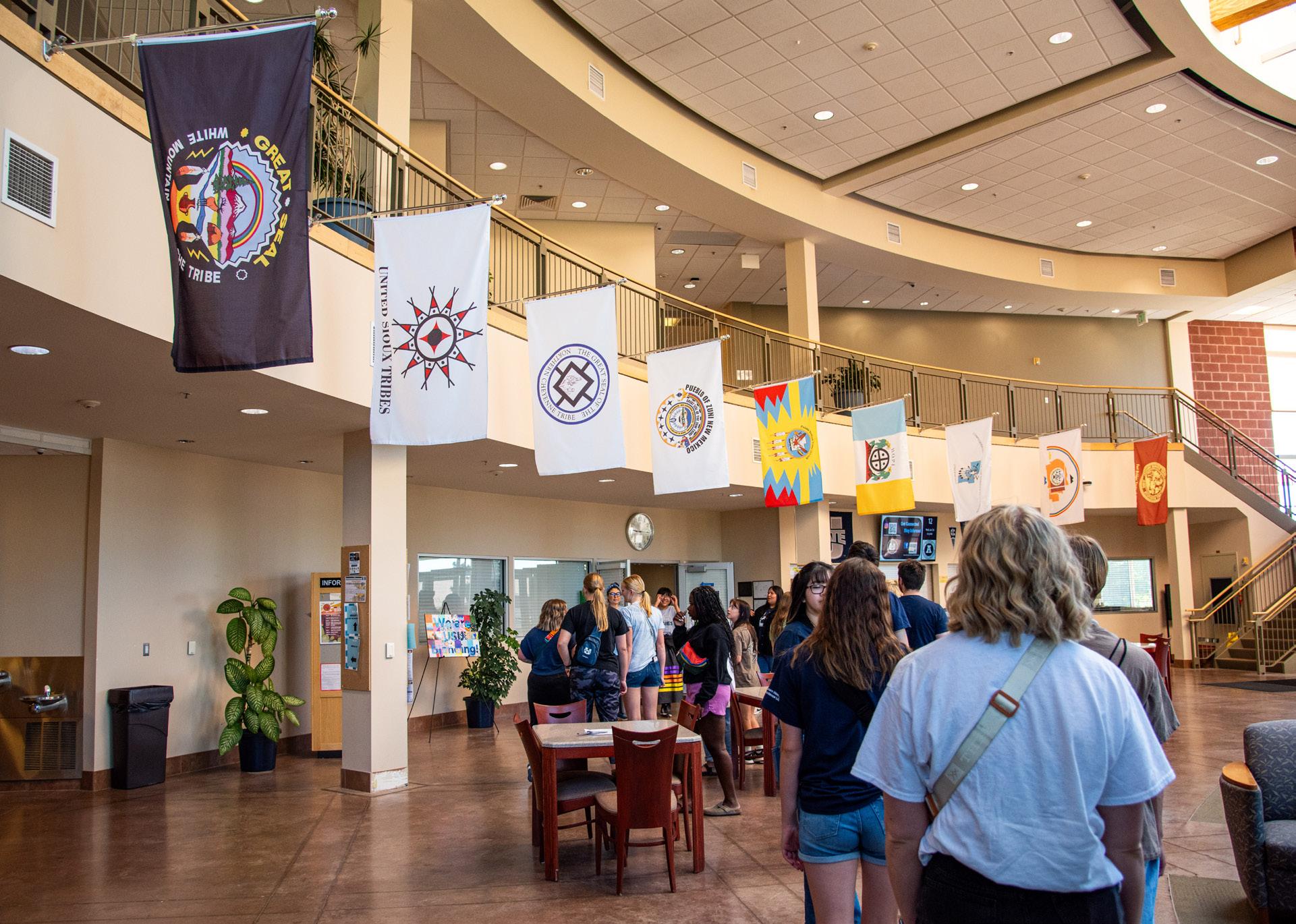
Olsen wrote. “Collaborating to bring this event to a rural and remote location for the first time was a meaningful and significant milestone.”
The celebration underscored the values and goals of the Blanding campus, which serves a majority Native American student population.
“We strive to ensure our Native American students feel valued and respected within our campus community,” Olsen wrote. “Celebrating their traditions is both a privilege and a responsibility.”
For Manygoats, who is Navajo, the week-long celebration held deep personal significance.
“For me, it’s about remembering where you come from and who you are and spreading enlightenment, empathy and education,” Manygoats said, citing values instilled by his mother.
Students and faculty alike responded positively to the events, with many expressing appreciation for the sense of belonging they created. “A lot of people said it felt like home,” Manygoats said.
In addition to organizing on-campus events, USU Blanding works closely with local tribes, elders and cultural organizations to enhance its programming.
A key example is the campus’s annual Connections program, where tribal elders share cultural stories and wisdom to guide students through their academic journeys.
“These collaborations celebrate and strengthen the cultural connections that are so vital to our students’ success and sense of identity,” Olsen said.
Looking ahead, Manygoats hopes future student leaders will continue the tradition.
“It was a pretty cool experience for everyone,” he said. “I think it’s a chance to remember where you come from, remember who you are and educate others.”
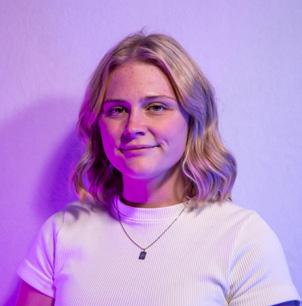
Aubrey Holdaway is a senior studying print journalism. She’s currently in mourning over the discontinuation of Aussie Lemonade Monster and the departure of midwest emo fall. — a.holdaway@usu.edu
By Bailey Daniels STATESMAN REPORTER
The Bill E. Robins Memorial Award is regarded as one of the most desirable awards for students and faculty to be presented with at Utah State University. The next ceremony will be held on April 5, 2025 at 7 p.m. in the Student Taggart Center Ballroom.
Easton Martin, USU’s traditions director, will help execute the event. Despite the awards being available for USU students across the state, most participants are those on the Logan campus.
“I would say it’s definitely just Logancentered because there’s just more students here. It’s also submitted to statewide, but we don’t have any physical marketing that’s out in the statewide campuses. Statewide students are open to nominate, open to get nominated. We’d love to have them involved in the process,” Martin said.
Nominations are open online, and an array of awards, such as Female Athlete of the Year and Organization of the Year, will be won. Nominations are accepted until 11:59 p.m. on Feb. 9, 2025.
“Say I nominated you — you would get added to a canvas course, and then you
would fill out an essay responding to a few questions like, ‘Here’s why I think I deserve this award.’ Then it would get grade by a selection committee that’s one alumni, two faculty, two staff. They all graded based off a rubric. Whoever has the average best score of those five scores is the one who wins that specific award,” Martin said.
2023 Miss USU Regan Tracy won this year’s Achievement of the Year award. As stated on USU’s website, the award is described as being “accomplished by superior ability, distinctive effort, great courage, or heroic action.”
“I always thought it was so cool just seeing all these really awesome students get awards for just their amazing work. I always thought, ‘Oh my gosh, I’ll never be able to be that cool,’” Tracy said.
After being crowned Miss USU, Tracy used her platform to create a more inclusive environment for women and underrepresented groups in STEM across USU campuses.
“I ended up doing STEM outreach to over 1,000 people, not only in Cache Valley but in Salt Lake County as well. I spoke at a lot of different conferences encouraging women to come into STEM and engineering and science and stuff like that. I did a service trip with the
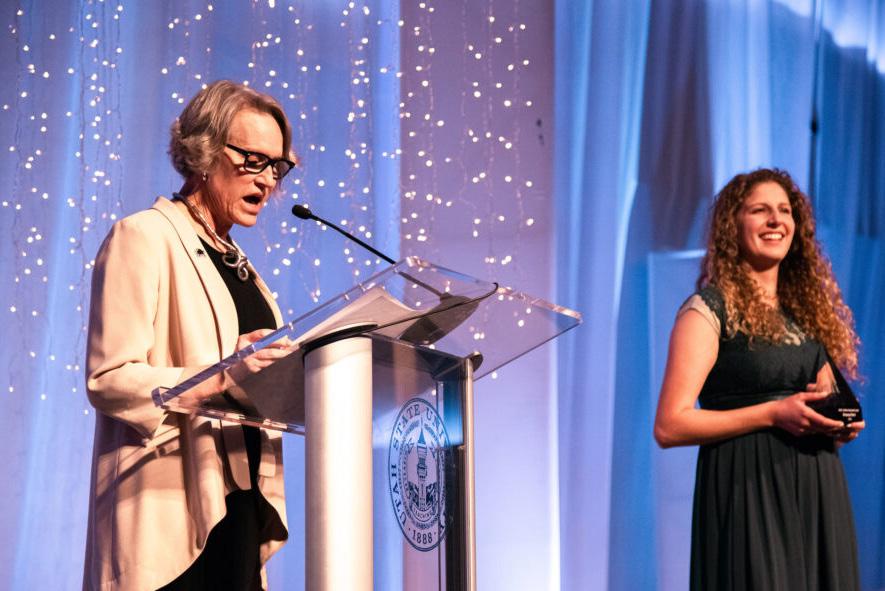
Society of Women Engineers. Back in March, we went to the Diné Navajo Reservation, right up on the Blanding campus of USU, and we did STEM outreach to the elementary schools that are on the reservation,” Tracy said.
This work made Tracy a prime candidate for her award.
“It’s really just been such an honor. I was just blushing for days afterwards. I was just so honored. It’s just really cool to kind of see the fruition of your hard work. Like, always reminds me of the pride I have for USU and being a student here,” Tracy said.
Tracy and Martin believe this is a great way to get involved with USU.
“I think it’s a really great way to put yourself on campus — a great way for us to recognize other people and all the things that they’ve been doing. We give out these really cool trophies. It’s just a great way to highlight students. And you know, another thing to be proud of and kind of commemorate your time at Utah State,” Martin said.
After the awards ceremony ends at 8 p.m., it is followed by Black and White Jazz Night. This black-tie event will include drinks, dancing and jazz.
“It’s just super fun to sit there and be a part of the ceremony and then go party with people. The winners usually stay after to do the Black and White Jazz Night, and you just see everyone so excited. The energy is just so fun. I love it,” Tracy said. “I love an excuse to dress up. It’s kind of a formal event. Just a little gala, I guess you could say.”


By Shayla Stimpson STATESMAN REPORTER
Seasonal depression is the term coined for the feeling of sadness that arises in the colder seasons. Also known as seasonal affective disorder, or SAD, seasonal depression affects roughly 5% of Americans, according to psychiatry.org.
Daylight saving time could be a catalyst for this disorder, making the days feel shorter and thus affecting a person’s mental health.
“Seasonal Affective Disorder or SAD is characterized by symptoms that start in the fall and ease up during the spring or winter,” wrote Ashley Yaugher, associate professor in health and wellness at USU in an email to The Utah Statesman. “SAD during winter months does tend to happen when there are shorter daytime hours, and changes in sleep patterns are one of the symptoms.” Despite the holiday season being dubbed “the happiest time of the year,” winter can bring an onset of depression for a multitude of reasons.
“Both biological and environmental factors can have a part in seasonal depression. Not being able to get out in the sun due to the shorter days and less sunlight is hard for anyone. When the days are shorter, our circadian rhythm is off, which helps us regulate sleep and our energy levels. The body also produces more melatonin with less daylight, causing us to feel more tired and not wanting to be as active,” wrote Jessie Koltz, assistant

professor in psychology, in an email to The Statesman.
Due to the shorter days, it’s common to find that there is less time to fulfill social needs.
“Having less time before/after working hours to engage with peers or get outside in the sunlight can isolate people and make them feel as if they are tired, want to sleep more, and may not want to engage in physical activity as much,” Koltz wrote.
Daylight saving time can cause SAD due to smaller amount of sunlight during the day.
“The shorter days of sunlight or spending more time indoors (because it is cold outside) can lead to Vitamin D deficiency and reduced serotonin in the brain, but also
it can make people more sleepy (brains may produce too much melatonin that causes this),” Yaugher wrote.
“People experiencing negative ‘self-talk’ about the winter months is also common.”
With the added stress from finals being right around the corner, it’s important for students to recognize symptoms of SAD in order to take action as soon as possible.
“Some symptoms of SAD include - symptoms of depression during the winter months (e.g., feeling sad or hopeless, irritable or pessimistic, thoughts of death or suicide), sleeping more than normal or oversleeping, not wanting to do things you previously enjoyed (withdrawing socially), having low energy, overeating (craving for carbohydrates) that can cause weight gain,” Yaugher wrote.

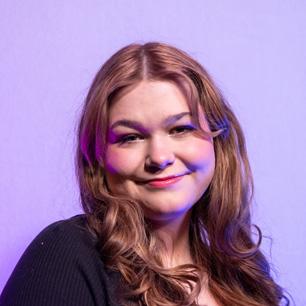
Shayla Stimpson is a sophomore studying health science. When not at school, you can find her with her cross-eyed cat named Winston.
— shayla.stimpson@usu.edu
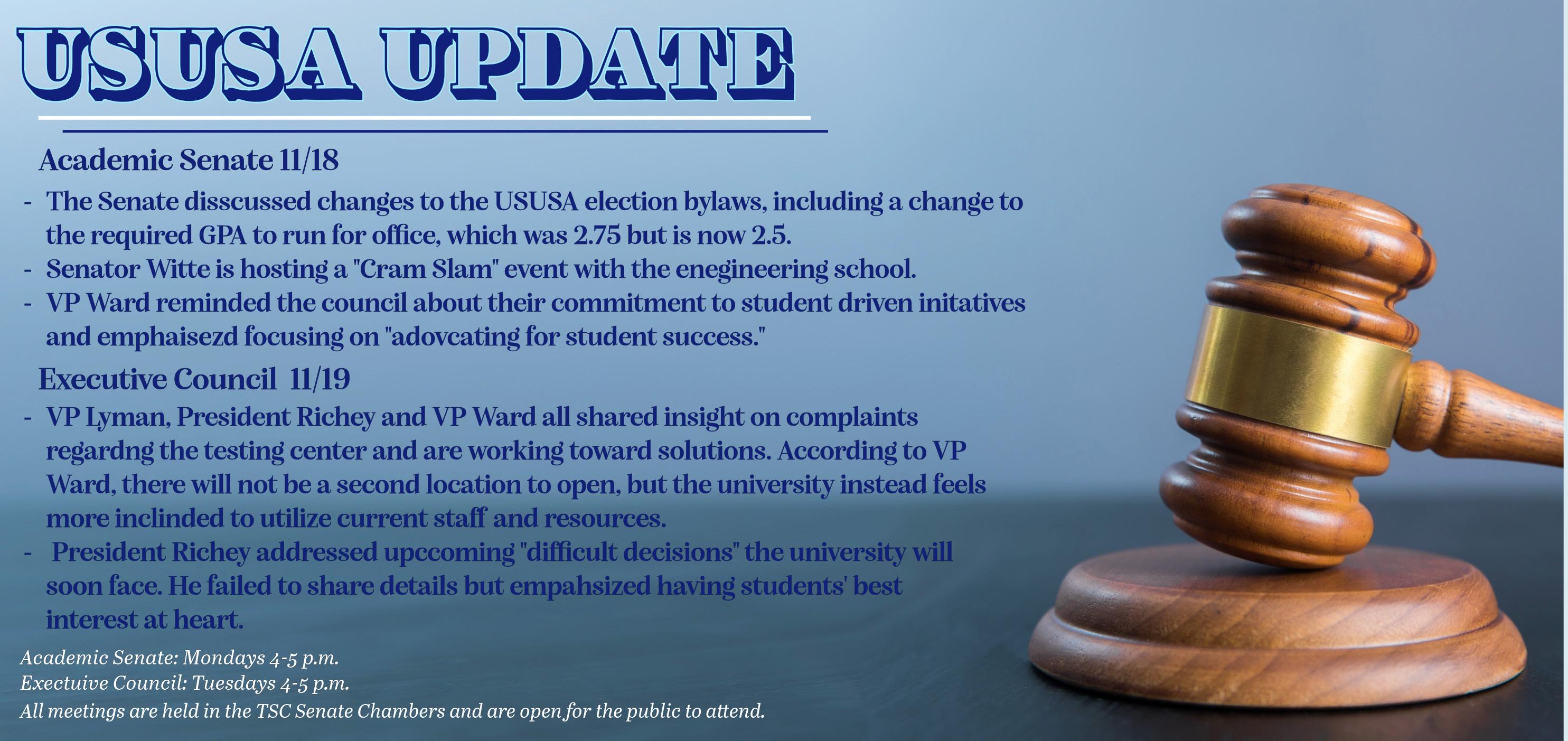
By Samantha Isaacson LIFESTYLES REPORTER
Brian McCuskey gave a lecture on the author of “Sherlock Holmes” Arthur Conan Doyle, and his belief in spiritualism.
McCuskey, professor and department head of the Utah State University English Department, wrote about how Doyle’s character Sherlock Holmes is logical and scientific by nature when Doyle himself believed in spiritualism.
“Everyone knows that Sherlock Holmes is an extremely logical thinker whose methods are strictly scientific,” McCuskey said. “However, not everyone knows that his author Sir Arthur Conan Doyle eventually became the most famous spiritualist in the world.”
McCuskey also wrote about Doyle’s writings and his lectures on how spirits communicate.
“He wrote many books and gave many lectures about his belief that spirits could communicate with the living at seances — through table-rapping, automatic writing, entranced mediums, teleporting objects, ectoplasmic materializations, etc.,” McCuskey said.
Valerie Odenthal is a freelance nonfiction writer.
Odenthal said McCuskey discussed how Harry Houdini and Doyle were friends but had wildly different beliefs when it came to spiritualism.
“Houdini spent a lot of the time when there was a preWorld War I boom in spiritualism trying to disprove it,”
Odenthal said. “We are talking about mediums, seances, tarot cards — all kinds of things. “
Odenthal said people were missing their relatives after World War I and another boom in spiritualism surged.
“It happened again after World War I because everybody was missing their relatives that were killed in the war,” Odenthal said.

According to Odenthal, this was interesting because Doyle, Houdini’s friend, saw things differently.
“Doyle actually was really caught up in that spiritualism, to the point where he published a book about fairies,” Odenthal said. “Two girls had literally cut a fairy picture out of a book and used them in photographs, and he believed that the fairies were real. He was this very intellectual person hanging out with his opposite.”
McCuskey wrote after learning about Doyle, one can go back to Sherlock Holmes and begin to see that his methods are not as logical and scientific as we think.
“When we look back at Sherlock Holmes after learning more about Doyle, the detective’s methods then seem much less purely logical and strictly scientific than they did before,” McCuskey wrote. “Often, those methods only work because he is a fictional character living in a story that was written for him to solve the mystery correctly in the end!”
McCuskey wrote that people can use this story as a cautionary tale in their lives.
“Rather than the stories being illustrations of the scientific method, they can also be read as cautionary tales for us,” McCuskey wrote. “Sometimes we only think that we are thinking logically. Rather than looking only for evidence that confirms our theories, we should also always be looking for evidence that would contradict them. Sherlock Holmes can’t do that: He can only ever find supporting evidence. But we can do more and better than that in our own lives, in the real world, as we seek to understand it.”
Misti Nielsen is the community connections specialist at USU Brigham.
Nielsen said McCuskey did well at keeping the crowd interested and engaged during his lecture.
“He definitely was able to pull the crowd in and keep your attention,” Nielsen said.
Odenthal said she felt like McCuskey was a very interesting speaker and kept the crowd engaged.
“I really appreciated the fact that Dr. McCuskey keeps it moving and is a fascinating speaker,” Odenthal said.
“It felt like the time really flew by.”
The lecture series is still ongoing, and if anyone would like to recommend a topic or speaker, they can reach out to Misti Nielsen at misti.nielsen@usu.edu.

Samantha Isaacson is a junior majoring in journalism with a double minor in art and psychology. She loves to read and spend time outdoors.
— sam.isaacson@usu.edu
By Essence Barnes STATESMAN REPORTER
Utah State University Uintah Basin uncovered the story of a small rural community within the throes of an unorthodox rural rehabilitation through their Speaker Series program. The program invites experts and trailblazers within their fields to present and speak on their work, bringing insightful and relevant topics into the larger community conversation.
Jim LaMuth, director of programs at USU Uintah, helps coordinate campus events such as the Speaker Series.
“We started our Speaker Series as a further step to engage our local community,” LaMuth said.
As a land-grant university, USU Uintah wanted to focus on their mission of community contribution and involvement.
“We wanted to look deeper into the purpose of a landgrant university and how it can serve our community,” LaMuth said.
The Speaker Series was created in the fall of 2020, and USU Uintah invites six speakers to present each year.
“We try to find a variety of speakers on subject matters that are related to life in the Uintah Basin or challenges and concerns in the Uintah Basin,” LaMuth said. “Whether they’re directly speakers from our area or their work involves similar themes that you’re seeing in our community.”
Past speakers have covered a wide range of topics relevant to the Uintah Basin, including indigenous culture, mental health, female leadership and development and environment-based challenges.
On Nov. 12, Maria Sykes, executive director of the rural renewal non-profit Epicenter, was invited to present on how her unique rural project has helped spark community involvement, leadership and creativity within the small town of Green River.
Green River lies in the high north-eastern corner of Utah and is a small rural community of roughly 900 inhabitants. Due to the loss of popular industries within the town, such as uranium mining, the town’s dwindling population has most often relied on tourism and agriculture.
“The population has pretty much been declining since the ’70s,” Sykes said. “But the entire narrative isn’t just the challenges the community faces because I like to think of them as opportunities.”
The Epicenter program was established in Green River in 2009. The program takes an untraditional approach when it comes to rural development, focusing on art, architecture and community building as a way to invest in their rural community.
According to the Epicenter website, their mission centers around involving local community members in town leadership and development projects.
“One of our goals is developing affordable housing,” Sykes said. “Our main project right now is called Canal Commons.”
The Canal Commons project will be opening up a new neighborhood along the Green River to provide more affordable and accessible housing to the community.
“Where Canal Commons is situated were once just vacant lots, just kind of sitting there,” Sykes said. “We were able to bring new life to some of those sites in downtown Green River.”
Though small in number, the Green River community is tight-knit and focused on its celebration of people and town pride. Epicenter residents express themselves through creative architecture and artistic city planning as a way of getting involved with their local community.
“Art and culture is very much at the heart of what we do,” Sykes said. “Even when we’re designing a house or doing development, we are always trying to come at it from a design or arts perspective.”
The value of art and culture within the community is apparent in the statues, signs and murals that color the town streets.
“There has been a great impact on the community, whether it’s helping people establish a business or supporting their small business or working with youth in the schools,” Sykes said. “We’re honored to be able to help move some of those local ideas and dreams forward.”
During her Speaker Series presentation titled “The Art of Rural Renewal,” Sykes said she spoke on the lessons that she has learned from Epicenter during the last 15 years.
Art and culture is very much at the heart of what we do.
—
Maria Sykes
“One of the big lessons we always talk about is having patience,” Sykes said. “Making sure to celebrate those little wins, otherwise the work can feel so daunting, especially after 15 years.”
According to Sykes, Epicenter hopes to serve as a model for other rural communities with its focus on community involvement and engagement.
“The art of rural renewal is like many types of art because you can

do it in a lot of different ways,” Sykes said. “I think we’ve mastered the art of rural renewal in our community in terms of how we are responding to our community, and doing that in a creative way.”
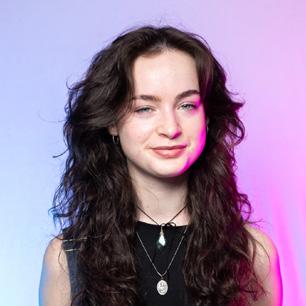
Essence Barnes is a second-year student majoring in journalism and minoring in environmental studies. She enjoys reading, writing and caffeine.
— essence.barnes@usu.edu
By Layla Alnadar STATESMAN REPORTER
Nearly 6,000 students attending USU are first-generation. First-generation college students are defined as students whose parents did not go to college or receive a 4-year bachelor’s degree in the U.S.
Pursuing a college education is an enduring and expensive process, even more so for students who are pioneering a path to academia for the first time in their family. For many first-gen college students, a college degree is less about what it can provide for them and more about how it can help them provide.
“As a first-generation college student, I never stepped in the office of a tutor or academic adviser when I attended a junior college in California and then BYU,” said Kimberly Hiatt, director of TRIO Student Support Services at USU Blanding. “I know what it’s like to be intimidated and unclear on who to visit and what to ask to make the most of my higher education journey.”
Hiatt is a first-generation college graduate who pursued a second career in higher education following earning her master’s degree. She said the number one predictor of student success is student engagement. TRIO aims to help students discover their skills, talents and interests to achieve their goals.
USU’s TRIO program is a federally funded student program designed to support first-generation and low-income students in their academic and profes-
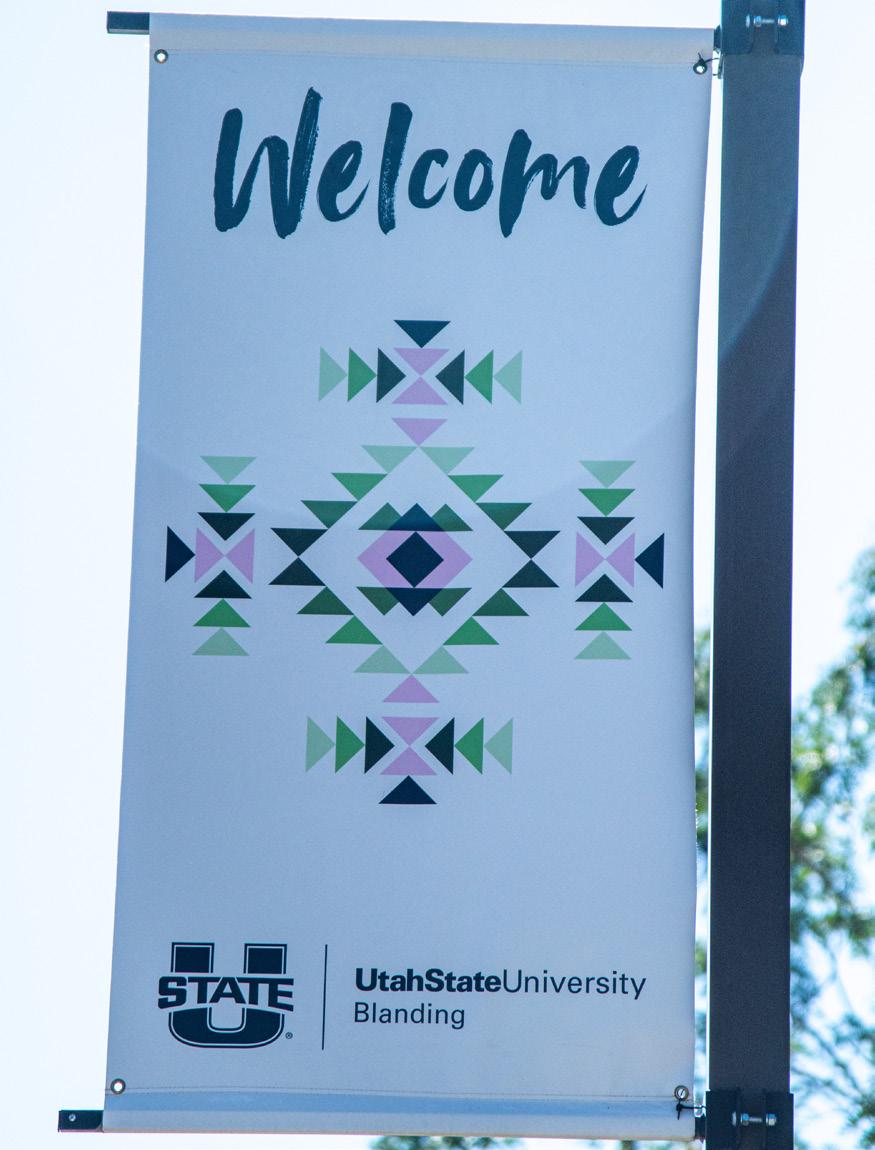
sional success. They aim to provide services for every step of the way by offering chances to develop intellectual, personal and community skills.
“Both of my parents are college-educated, and they received their degrees outside the United States,” said Anna Sar, a sophomore studying kinesiology, said. “I still felt like I navigated high school and college differently than a lot of people. The admission process is nothing like it was for them, and as I was learning how to prepare for higher education and apply for colleges, so were they.”
Both her parents received a 4-year college education, but Sar said the admission process in the U.S. significantly differs.
“I am lucky to have parents that support me, but we all went to my high school counselor with questions,” Sar said. “We all needed help and guidance, and when I was preparing for the ACT, this was something that my parents had never heard of before.”
Many first-generation students share the experience of navigating the world of high school preperation, college admissions and higher education by getting creative with the resources they utilize. The internet becomes a library, and the path is built as students pursue college.
“It’s not that I am a good test taker or that I really have always enjoyed school, but I researched everything on my own,” Sar said. “From test scores, majors, minors, I remember just watching videos on YouTube. I learned a lot about applying just online.”
Sar credits her success in her educational career to what she learned from her parents. She recalls the countless hours her parents spent with her at school when she was younger.
“I have always loved school,” Sar said. “My goal is to get into medical school. This wouldn’t be possible without my teachers, counselors or advisers, but my parents have always shown me how a strong foundation and work ethic pays off.”




With a weekly rotating theme, ‘Em’s Blend’ uses favorite movies and TV shows as a springboard to dive into different niches. Whether it’s for a Linklater classic, capturing the feeling of a specific setting with music is Emmalee’s favorite thing to do. You can catch “Em’s Blend” every Monday at 5 p.m. on Aggie Radio 92.3!
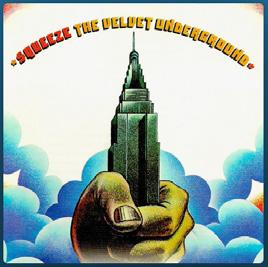
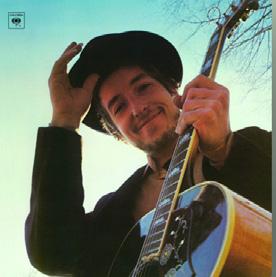
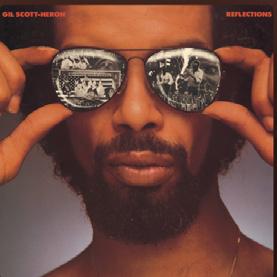
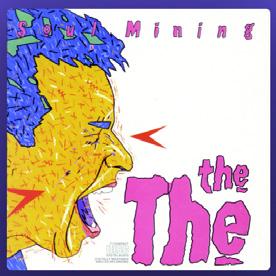
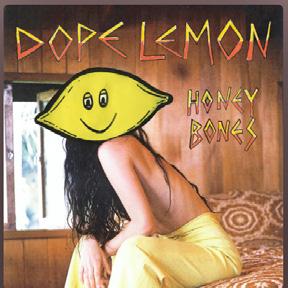
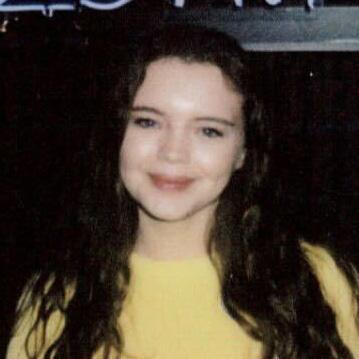





By Lacey Cintron and Brook Wood STATESMAN REPORTERS
USU Eastern is presenting speakers to discuss the unique history and environment of Eastern Utah.
“From the Book Cliffs to Blanding: A Panoramic View of Eastern Utah” is a series of six faculty speakers found and introduced by the College of Humanities and Social Sciences, USU Eastern Learning and Library Commons and the Merrill-Cazier Library.
The program began on Sept. 11 with Evey Gannaway Dalton, assistant professor of geology at USU Eastern. The speakers span from professors of geology, paleontology, history and wildland resources to the director of the USU Eastern Prehistoric Museum.
The final speaker will be Terry Tempest Williams, a well-renowned author and a writer-in-residence at the Harvard Divinity School in Cambridge, Mass. Williams used to be a member of faculty at the University of Utah.
Michael Harris, head of Eastern and statewide library services, is in charge of the program. He recruits professors and faculty to speak within their specialized fields. Harris reached out to Williams to be the last speaker of the series, as she intends to look more toward the future of Eastern Utah as it coincides with climate change and other factors.
“Since this is a USU publication, even though she will be doing this talk at Price, she and her agents have agreed to allow us to do a closed Zoom webinar and broadcast that Q&A to anyone in the USU community,” Harris said. “They
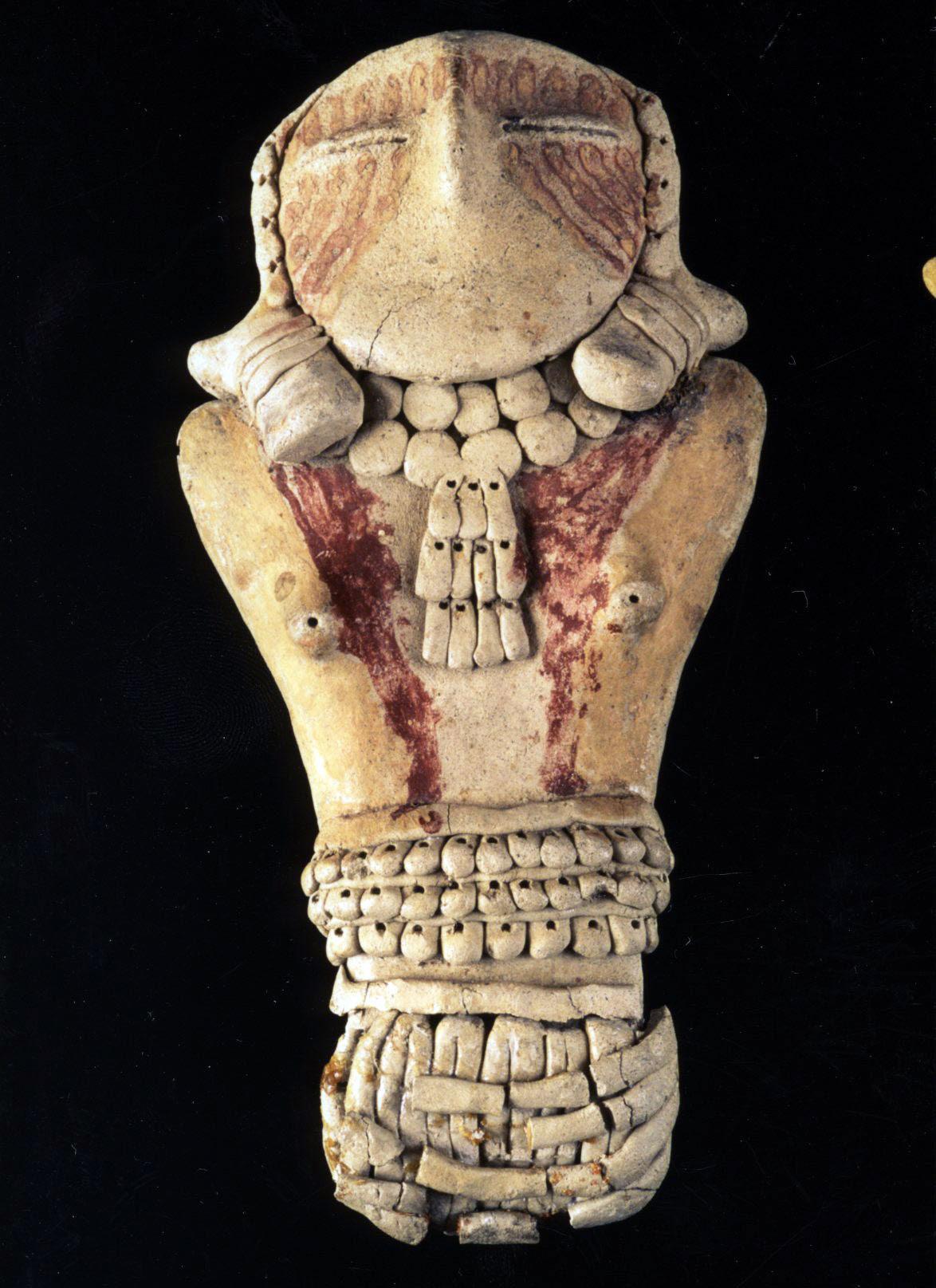
can log into a Zoom webinar and attend that session virtually.”
Harris was inspired by his goal to increase the library’s outreach and the unique environment at USU Eastern. He said he learned about the rich geologic and paleontological history of the area from the first two speakers of the series.
“I started talking to some faculty members about research talks at the library,” Harris said. “I feel like these are a great way to connect our students and potentially off-campus community members with the intellectual life of our faculty. So people know what faculty are working on outside of just their regular teaching assignments.”
The last three speakers will present in 2025 on Feb. 12, March 18 and April 7. Recordings of previous speakers will be available on the USU Eastern website.
The most recent speaker was Sunshine Brosi, associate professor of wildland resources at USU Eastern. She spoke on Nov. 12, and her talk was titled “Unique Plants and Animals: The Flora and Fauna of Eastern Utah.”
“She is very approachable, very knowledgeable,” Harris said. “She’s someone who just — she laughs. So she’s a very engaging speaker.”
Harris predicted Brosi would give an in-depth overview of the plants and animals of Eastern Utah and inevitably talk about one of her favorite species — kit foxes.
The kit fox is listed as a vulnerable species in Utah. They dig burrows other species use and are an important part of the ecosystem they inhabit. Brosi brought up kit foxes several times throughout the presentation, professing her love for the species and emphasizing their endangerment.
“It’s like a small fox that lives in the desert, and it’s uniquely desert adapted,” Brosi said in an interview to the Utah Statesman. “It has great big ears, and it has hair on the bottom of its feet so it can walk in the hot desert.”
Brosi brought attention to other vulnerable and rare species in Utah, such as the endangered little brown myotis, one out of the 16 species of bat found in Utah.
According to Brosi, there is a high number of threatened plants in Utah, including the endangered Ute lady’s tresses, an herb found in low mountain areas.
Brosi also talked about the San Rafael Swell, a semi-desert environment that houses up to 120 rare species of plants, including the San Rafael cactus. The cactus can only be found in the swell and is endangered due to being collected or trampled on.
The presentation’s structure was described as a “virtual road-trip” through Eastern Utah, starting at high elevations with higher levels of precipitation, going down the mountains, through semi-desert and ending in the desert. Brosi talked about soil qualities and different species that could be found in these environments and how elevation plays a role.
Brosi brought up how to assist endangered species and prevent more from being threatened. She emphasized the importance of being educated and understanding where food and water comes from and the impacts of individual actions.
“One of the best things that we can do is to recreate responsibly,” Brosi said. “Wherever people go, if they go to
Moab or Price or anywhere between, understand the impacts of whatever they’re creating, mountain biking or hiking or a TV or anything, understanding the psychological impacts of that.”
Josh Lively is the curator of paleontology at USU Eastern’s Prehistoric Museum. On Oct. 23, Lively spoke about the variety of turtle fauna that once called Utah home, living among the dinosaurs over 75 million years ago.
“Turtles were actually very, very abundant and diverse in the ecosystem here in Utah,” Lively said. “75 million years ago, we had at least 17 species of turtles living in Utah at the time.”

One such species is the Arvinachelys goldeni, dating back to the late Cretaceous period. Arvinachelys are classified as baenidae, an extinct family of freshwater turtles.
“There’s a critter I named back in 2015 called the Arvinachelys,” Lively said. “This turtle is really neat because unlike most turtles which have a flat snout, this thing has a really expanded snout.”
Arvinachelys goldeni translates to “bacon turtle” in latin, named for its distinctive pig-like snout. This pig-snouted turtle went extinct over 40 million years ago when Utah’s climate went from swampy lowlands to dry desert.
Today, only one species of native turtle inhabits the red rocks of Washington County: The Mojave Desert Tortoise.
This sandy-colored reptile spans from the lower tip of California through Southern Nevada up to Southwestern Utah.
“The big reason why we have so few turtles in Utah today compared to the age of the dinosaurs is because the climate has dramatically changed,” Lively said. “Back then, we were right on the edge of a shallow interior seaway.”
Over 60 million years ago a large, inland sea known as the Cretaceous Seaway split North America into two landmasses, with Utah located right on its edge. As a result, Utah’s climate was much warmer with many coastal swamps and lakes creating the perfect environment for aquatic turtles.
“Only having one species of native turtle in Utah is really
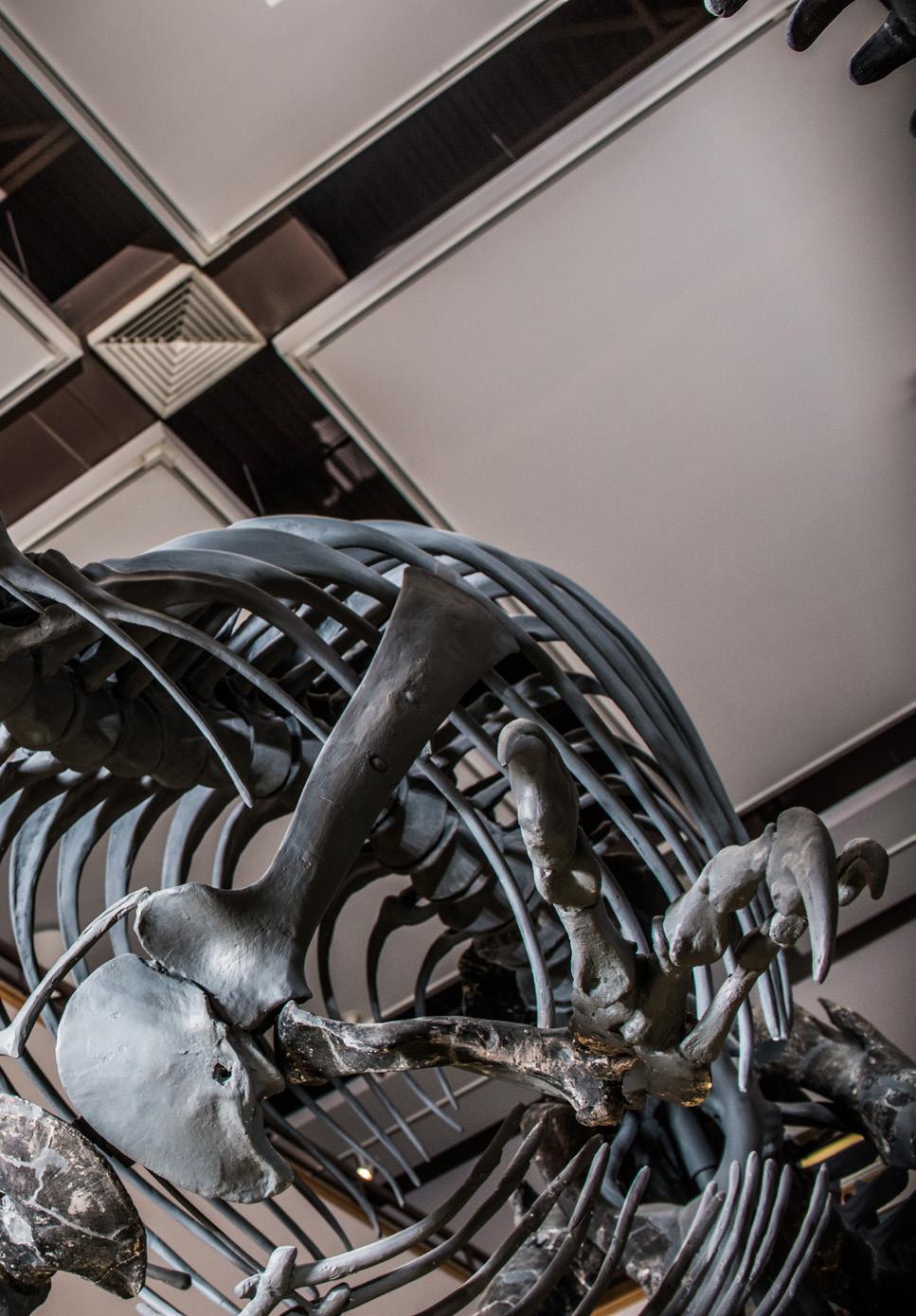
an artifact of the Ice Age and moving all of those more favorable habitats much further south of Utah,” Lively said. According to Lively, development in Washington County is the biggest threat to eastern Utah’s native tortoise.
“There’s only a very small area in lower Washington County where the desert has favorable habitat,” Lively said. “There are roads and housing that people want which cuts right across this habitat.”
Furthering protections for places such as Red Cliffs Desert Reserve could safeguard Mojave Desert Tortoise populations. However, this reserve is up for nearby potential development plans as part of the Northern Corridor Highway project.
“A lot of people here in the states are all about this kind of runaway development,” Lively said. “This is a decision for our populace here, whether or not we care enough about things like the Desert Mojave Tortoise.”
The series will move into the indigenous and material records of Eastern Utah with museum director Tim Riley’s lecture, painting a complete picture of Eastern Utah’s rich history, from fossils to culture.
“I’m going to talk a little about how we can tell the stories of people from the stuff they left behind — their cooking pots and tools, their remnants of their house and from broken debris from their daily lives,” Riley said.
Small hunter-gatherer bands, called Paleo-Indians by archeologists, were the first inhabitants of the Americas, utilizing stone tools to hunt megafauna. Around 8,500 B.C., humans entered the archaic period. People learned to harvest the desert, and inventions such as earth ovens and grinding stone tools arose in this era.
Corn was first introduced to Utah from Mexico 2,000 years ago and spread across North America. This era saw people living in pit houses, using greyware pottery and working primarily as corn farmers.
The direct descendants of these groups are the Ute, Paiute and Shoshone tribes in Eastern Utah.
“Most of what we see on the landscape around here is from those farming groups,” Riley said. “They’re staying in places longer and investing in spaces longer.”
Rock art throughout Nine Mile Canyon, tools and ceramics preserved at the Prehistoric Museum provide a glimpse into this time frame. Similar to protecting Eastern Utah’s local fauna, questions have been raised about preserving this cultural history.
“Some say the best way to preserve history is to leave it all in place — don’t disturb it,” Riley said. “But then there are other things we see that naturally decay or fall apart.”
Tools or other objects made from perishable materials often disappear from the record due to the natural decay process, dubbed the “missing majority” in archeology. Human intervention is often required to preserve these objects in museums and archives.
However, human presence also impacts spaces which aren’t perishable, such as ancient homes or rock art sites, leaving indelible traces.
“If something is in a rock shelter or an overhang, it will probably continue to preserve there,” Riley said. “The problem is that people come and visit those spaces. When I was excavating a rock shelter in the buck horn wash area, you could see bullet casings and fire rings, and even when I dug down into the sediment, I found things like rubber balls and receipts from the 1960s.”
Riley’s lecture aims to share the material history of Eastern Utah while urging the importance of protecting it by being aware of the impact visitors leave and remaining sensitive to the different voices of this story.
“My specialty is the material culture — the stuff that’s left behind,” Riley said. “My talk is going to be about rock art, how we can visit these sites with respect and how we can best respect those cultures as well as their descendent cultures today.”
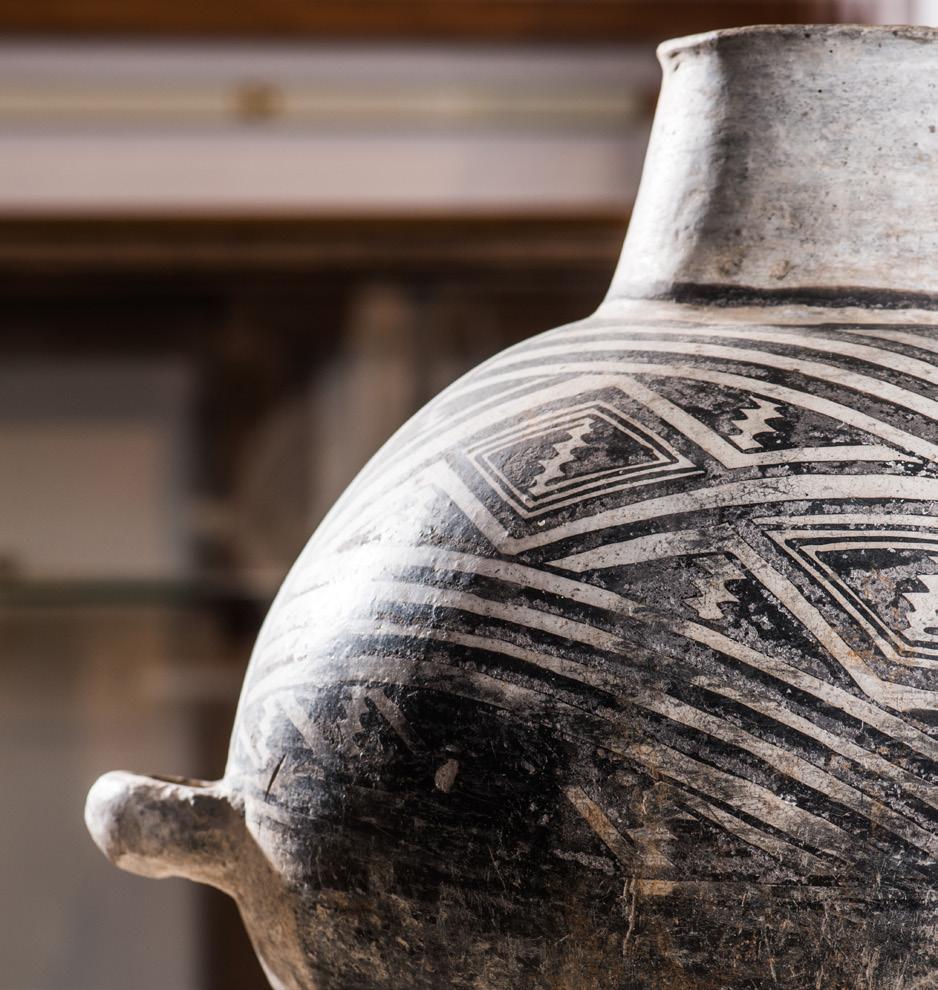
Starting from the beginning, USU Eastern’s lecture series shared the geologic history of dinosaurs and native fauna.
“Utah has a phenomenal paleontological record of the evolution of life on our planet,” Lively said. “Very few places can you see fossils from every geological time period — you can do that in Utah.”
The lecture series will wrap up with Eastern Utah’s people-centric history, from the indigenous to the immigrant. By telling these stories, the lecture series hopes to keep Eastern Utah’s past alive for decades to come.
“It’s up to the present to preserve the past for the future,” Riley said.


Lacey Cintron and Brook Wood are reporters for The Utah Statesman. Lacey loves learning about the human mind, sharing stories and naps. Brook enjoys playing the violin in the USU Symphony Orchestra and the occasional sweet treat.
— lacey.cintron@usu.edu — b.wood@usu.edu
By Esther Owens STATESMAN REPORTER
The Utah State University Botanical Center, located in Kaysville, is committed to providing the community with practical education in gardening and landscaping.
The center uses teaching gardens, demonstration gardens and landscape and irrigation demonstration areas to teach conservation and sustainable use of natural resources.
Michael Kilcrease is the property manager of the center who oversees day-to-day operations.
“We have several demonstration gardens, those are intended for and used for community teaching, as well as being utilized by continuing education and county extension services,” Kilcrease wrote in an email to The Utah Statesman. “We offer a variety of classes, including irrigation, landscape design, cut flower, fruit tree and small fruit pruning and care, and park strip demo ‘flip your strip’ type classes.”
The center also teaches using its edible garden, a hands-on classroom home to numerous apple, peach, grape, berry and vegetable varieties.
“We conduct classes in them to show them how to prune, how to plant and how to harvest,” said Jerry Goodspeed, director of the center. “Then in the late summer and fall, we have taste testing days where people can come and taste the different fruits and vegetables to see if there’s something that they might want to plant on their own.”
The center utilizes their arboretum with 500 tree species by focusing on water-wise trees to give community members ideas for their own landscaping.
“That’s the educational side,” Goodspeed said. “To show people what they can grow in their yards or backyards or wherever they want to.”
USU’s botanical garden was originally founded in Farmington in the 1940s. In 1994, the Utah Department of Transportation bought out the land, so USU relocated to what is now the Kaysville center.
The property spans 100 acres, including 20 acres of wetlands. The land consisted of only a few buildings until 2008 when the arboretum was built, which now spans 8 acres.
“From then on, we’ve just continued to grow and create more gardens, more learning spaces — those types of things,” Goodspeed said.
As the seasons change, so does day-to-day life at the center.
“Seasons are obviously drastically different, from when we start our shifts in the mornings to try to beat the heat, to showing up early to clear snow before the offices on site open for the day,” Kilcrease wrote.
In addition to classes and demonstrations, the center also hosts seasonal events. In the winter, they utilize their indoor arena to host Reindeer Express on Dec. 14, a holiday event with hands-on activities
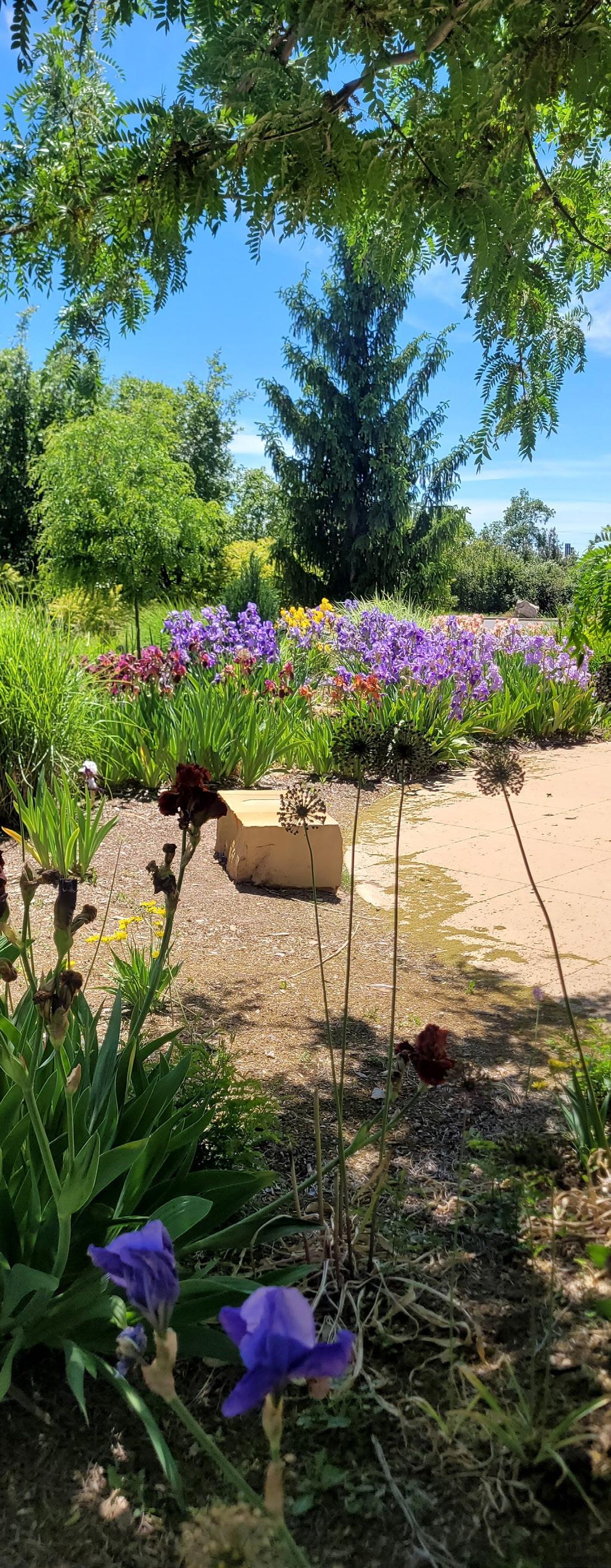
for families. Volunteers from the USU veterinary program come to help out.
In the spring, the center puts on Art in the Arboretum, where the public can enjoy the season through art, music and food. In the fall, the center places scarecrows throughout the gardens for a scarecrow walk.
Students interested in getting involved at the center can do so through its internship program, which is open to students from all colleges, not just USU.
“I actually started getting familiar with the center as a student,” Kilcrease wrote. “I earned my degree in landscape construction and horticulture at the Kaysville campus in 2019. I started as a seasonal employee in 2017 and with the completion of my degree was hired as an irrigation technician, and over the past seven years I have continued to take on more responsibilities.”
Kilcrease believes the center provides a large green space for the community and is optimistic about the growth of the center.
The Davis Agricultural Heritage Center is a recent addition that has an indoor and outdoor equine facility designed to serve the 4-H program, a United States Department of Agriculture-run youth development organization that focuses on the head, heart, hands and health. It includes an equine therapy program.
“We’d like to support that program to help with its continued success,” Kilcrease wrote. “As well as growth with education programs within the gardens and other programs on our property, to include 4-H, water quality (wings and water) and local school field trips.”
The Wings and Water Wetlands Education Program allows students to explore the wetlands of the Great Salt Lake and is one of many youth education opportunities at the center.
The next event at the center Budding Botanists will be held on Dec. 3 and will include a lesson, activity and craft for youth.
“Our community events are really starting to get attention and I hope that can continue to grow and get better and better,” Kilcrease wrote.
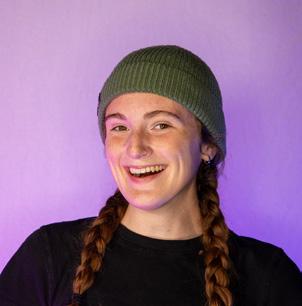
Esther Owens is a sophomore studying journalism. When she’s not busy working on a story, she’s probably at the climbing wall.
— esther.owens@usu.edu
By Carson Frost STATESMAN REPORTER
The USU Eastern Golden Eagles Men’s Basketball team is hitting the court with a new group and a seasoned coach at the helm. Under the leadership of head coach Bill Evans, now in his fourth year, the team has posted a 3-3 record thus far, showing early signs of both promise and room for growth. After a standout 19-9 season last year, expectations are high for the Golden Eagles as they seek to build on recent successes despite major roster changes.
Evans, who has held a winning record throughout his tenure at USU Eastern, brings a wealth of experience to the program. Formerly the head coach of Southern Utah University from 1992 to 2007, he remains the winningest coach in SUU’s history, with 209 wins with the Thunderbirds. In his three years with the Golden Eagles, Evans has not only led his teams to strong finishes but has also helped 10 players transition to play at fouryear schools, showcasing his commitment to developing talent both on and off the court.
“I tell every kid I talk to about playing here: If you don’t want a 75-year-old kicking you in the butt, don’t come here,” said associate head coach Easton Ralphs, referring to Evans. “But if you don’t want a 75-year-old to give you a hug and tell you how much he loves you, don’t come here either.”
After years of competing at the Division I level, Evans has encountered new challenges in his transition to the junior college level. USU Eastern has an advantage that other colleges at this level don’t: It offers the same programs as the Logan campus, allowing students to choose between pursuing an associate degree or completing their entire bachelor’s degree. However, many players on the team aspire to be recruited by four-year schools, so most will leave the program after two or three years. Building a winning culture and consistent team chemistry can be challenging at the junior college level, but the players have embraced the philosophy instilled by their seasoned coach.
“I think the thing with our team is we just have really good guys, so we all get along well,” said guard Mark Huber.
“The campus isn’t that big, so we practice together every day, we live together, we eat in the cafeteria togeth er, so we spend a lot of time together. When you have good, solid people, you can just kind of mesh and gel and become good friends on and off the court.”
The Golden Eagles are an especially freshfaced squad this season, with only four returning play-

ers. This significant overhaul gives several newcomers a chance to make their mark, and two players are stepping up as key contributors. First-year player Ike Palmer has emerged as the team’s leading scorer at 14.3 points per game, while Jaxon Heiden has become a force in the paint, leading the team with 5.1 rebounds per game. Despite the significant roster turnover, the Golden Eagles are looking to carry forward the momentum from last year’s success. In the 2023-24 season, the team achieved one of the most successful campaigns in recent program history, led by standout player Martel Williams. Williams, who averaged a record-breaking 27 points per game, has since transferred to California Baptist University, where he competes at the Division I level. This season, the Golden Eagles face the challenge of blending new players into the team dynamic and finding ways to replicate last year’s winning formula. With Evans’ guidance and emerging leaders on the roster, the Golden Eagles aim to make their mark in the Scenic West Athletic Conference once
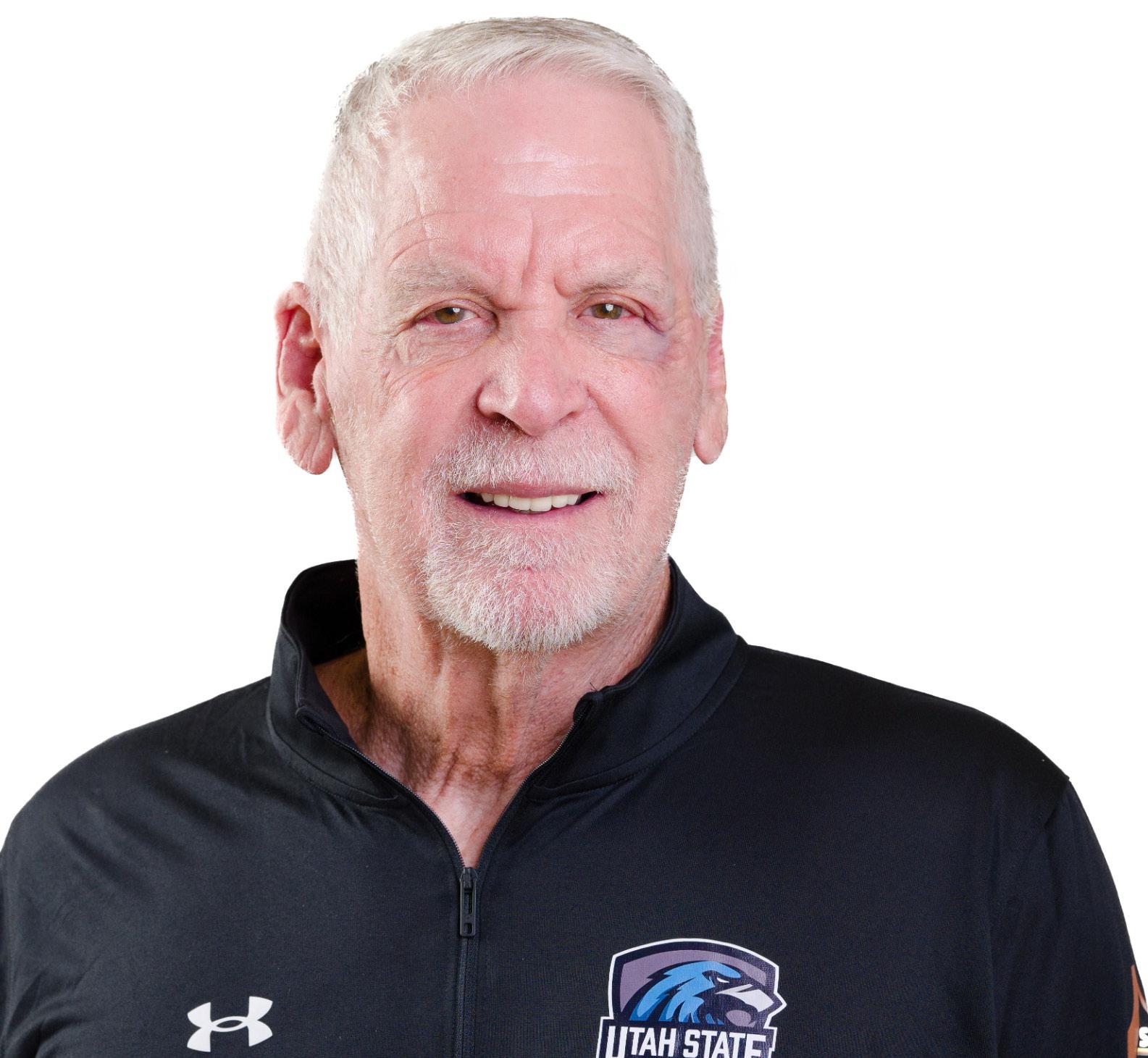
“Our team has stuck together,” said forward Ryker Richards.
“We started off the year hot, and then we lost a couple heartbreakers. Our
common goal is to try to get better and play hard enough that we can win a conference championship, so we’ve just been battling it out and staying together as a team.”
And with such a respected and beloved leader in Evans, the last thing the players want to do is let him down.
“His biggest thing is you gotta be tough and be able to play through a lot of things in basketball,” Richards said. “He definitely helps us learn how to do that, both in practice and outside of practice.”
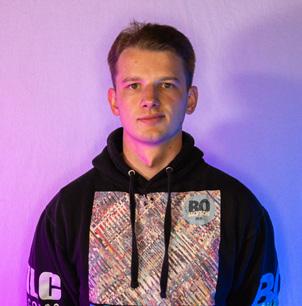
Carson Frost is a transfer student from Denver. studying journalism. His family originally hails from Los Angeles, and he is a passionate fan of the Lakers, Dodgers and Philadelphia Eagles. He loves writing, making music, hitting the gym and taking road trips.
— carson.frost@usu.edu
By Rain Schenck STATESMAN REPORTER
As of September, Utah had more mountain bike cyclists in the National Interscholastic Cycling Association than any other state, yet no university or college in Utah has a fully operational mountain biking team.
At the end of this year, Utah State University Eastern will be one of two schools in the state to launch not a mountain biking club, but a fullysanctioned athletic program under the university’s athletics umbrella. So, why USU Eastern?
“We’re surrounded by a trail system. We have a race course that’s NICAapproved right in our backyard,” said USU Eastern’s first mounta coach Mark Jespersen. “It just kind of made sense on a number of levels.” Starting the program hasn’t been easy — Jespersen has spent years developing mountain biking in Price.
After buying a bike shop and running what is now Altitude Cycle, Jespersen wanted more youth in the community to get involved in biking. Following announcements over the intercoms at the local high school, only three riders signed up for mountain biking. With no prior experience in coaching mountain biking, Jespersen jumped all in. “There’s a real science behind coaching, and there’s also a real human side,” Jespersen said. “The good coaches can combine both and get their kids to perform at a high level. That’s what I try to do.”

Jespersen’s efforts to grow mountain biking in Price never stopped. Nine years later, he’s still coaching — not just a team of three, but a thriving team of 52 riders. Jespersen’s involvement in the community goes beyond recruiting more riders. For years he has been working with USU Eastern to get a team — program that keeps local talent local, aids in enrollment and develops riders who graduate high school and want to keep riding.
Building an authorized race trail and establishing a team at USU Eastern has been a high-priority goal for Jespersen. After
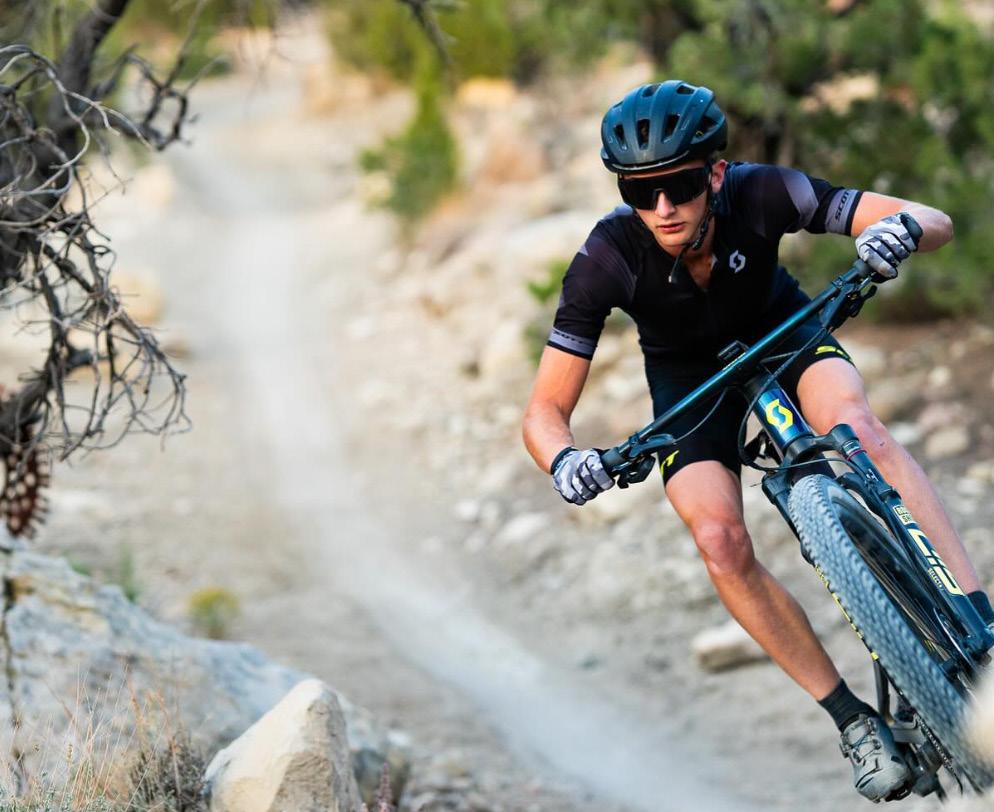
As of now, it’s just Coach Jespersen — an “old man” who simply “loves riding bikes,” as he puts it. The team is in its building phase, with plans for six to 10 riders by spring. Riders or no riders, Jespersen’s objective remains the same: “Give an opportunity to kids that they don’t normally have.”
As spring 2025 is rounding the corner, keep an eye out for the USU Eastern Mountain Biking team as they hit the trail.
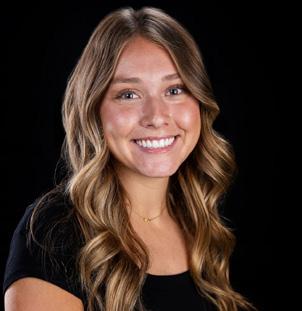
Rain Schenck is from Syracuse. She’s a senior at USU studying journalism and communications. If she’s not writing or reading, she can be found at any competitive event or game night, throwing a ball or yelling at a card game.
A02339636@usu.edu

Jack Burton has taken seven photos for you. He makes playlists on Spotify and designs on Adobe Illustrator every other minute. Despite his growing love for lasagna, he has only had one serving this academic year.
— jack.burton@usu.edu

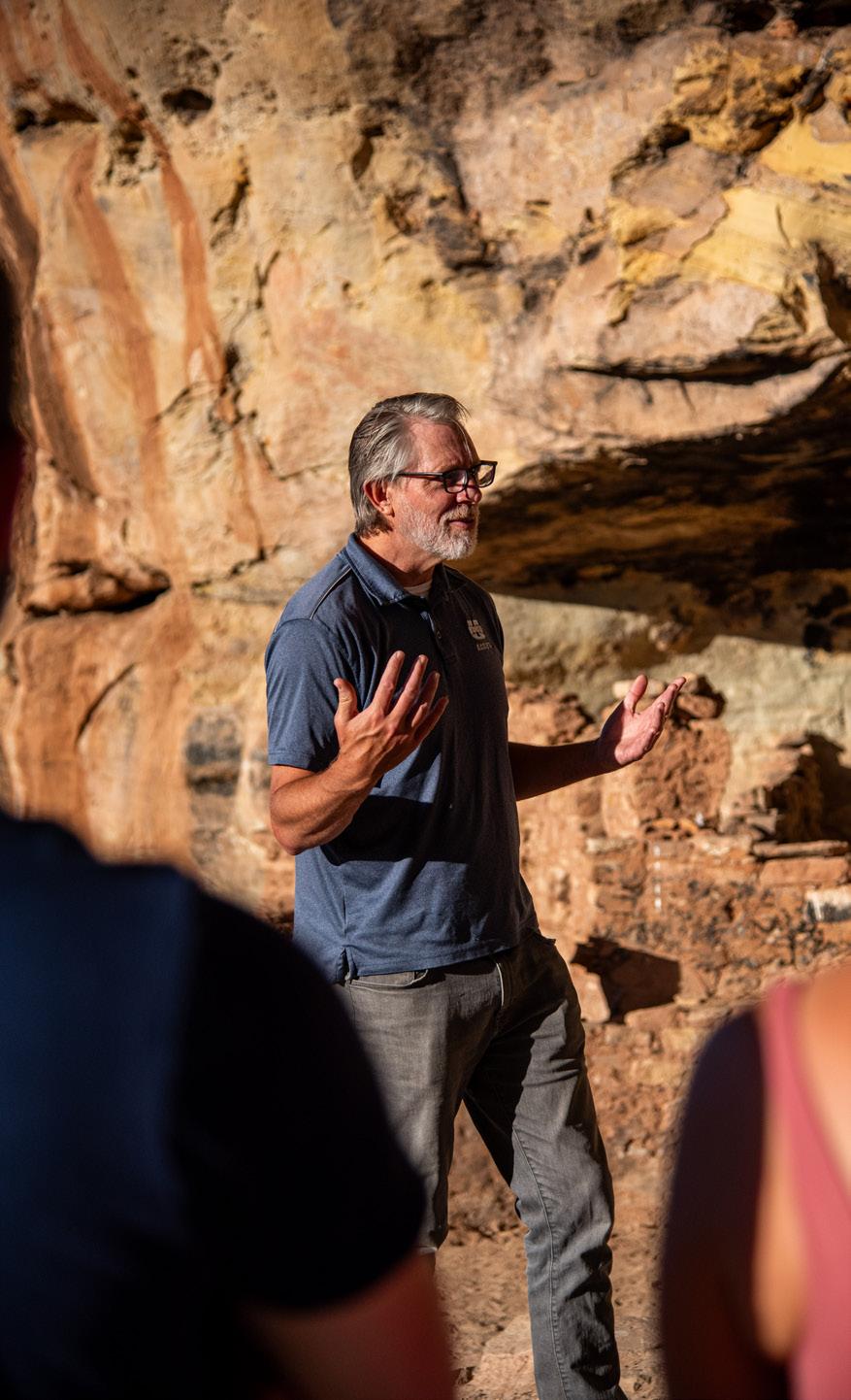

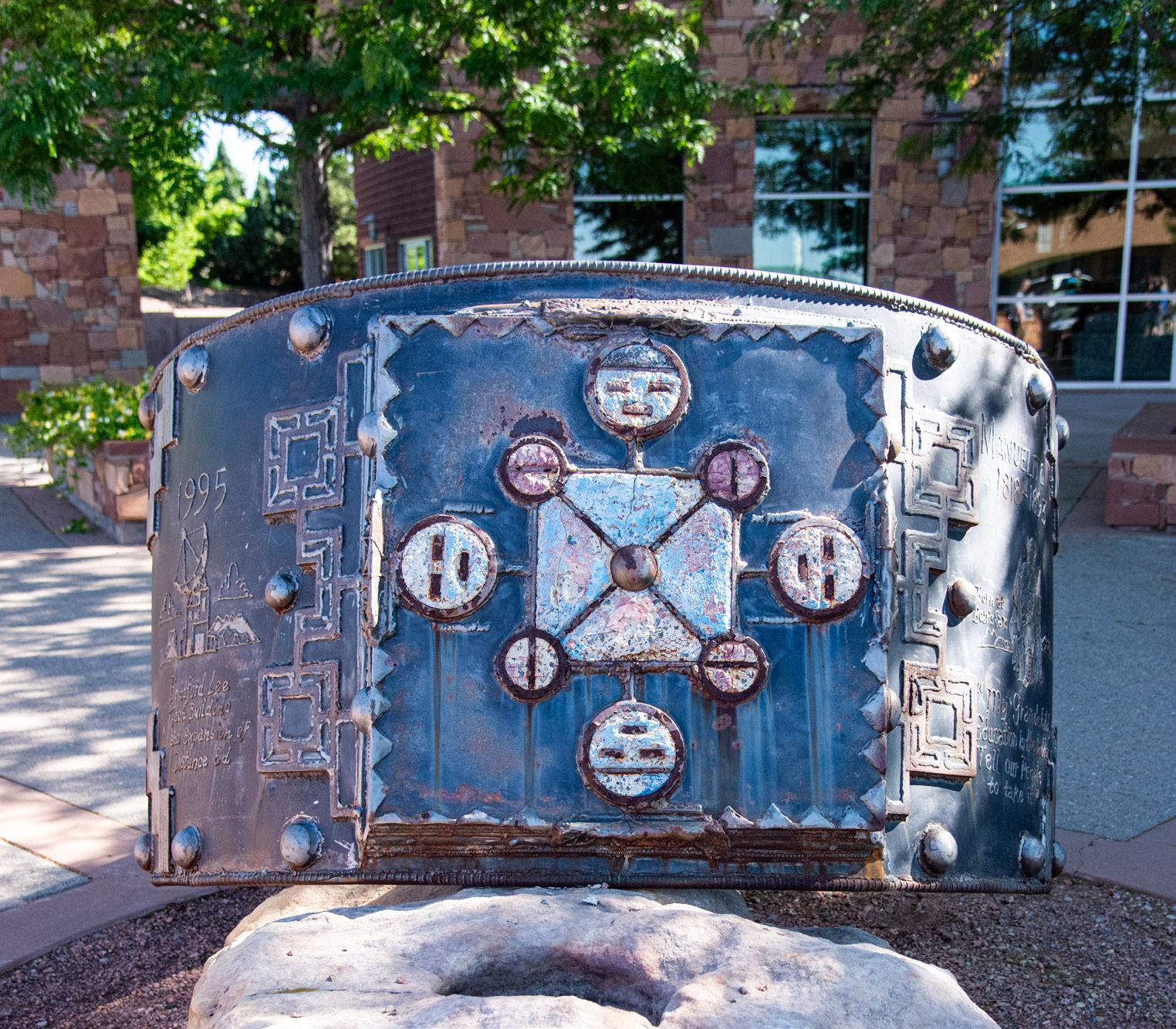
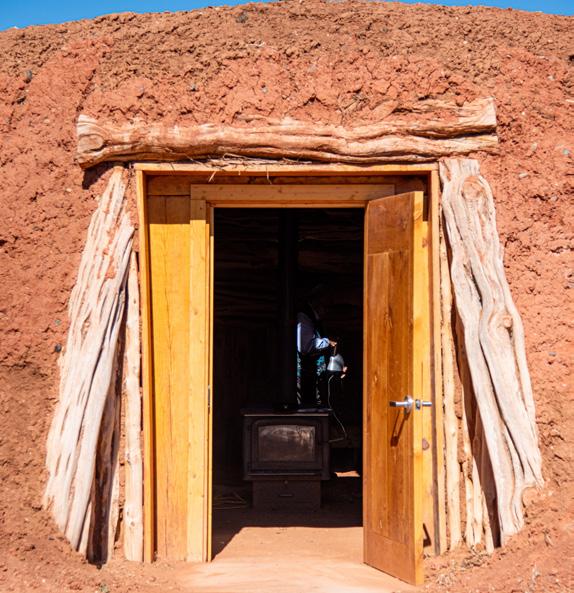


By Malory Rau STATESMAN REPORTER
Comedian and actor Will Ferrell was sent an email from SNL writer and close friend Andrew Steele. The email explained that Andrew was no longer the Andrew that Will had known for the last thirty-something years. Andrew was now Harper, and this was Harper’s coming out. The two quickly decided to take a road trip across the country for Harper to reintroduce herself to the country she loves so dearly and to answer the hard-hitting question: Will it love her back now that she’s no longer Andrew Steele? This is “Will and Harper.”
Originally debuting at the 2023 Sundance Film Festival, “Will and Haper” made its way to Netflix in September. The familiar face of Will Ferrell is what draws viewers in, but Harper Steele’s heartwarming story and humorous connection with Will is what keeps them watching. The documentary addresses themes of family, love, friendships and acceptance all in between dialogue discussing shitty beers and road trip restaurants.
It is clear off the bat by said dialogue this is not an SNL sketch but something much more raw that may also not be found in a typical documentary. The conversations that surround the pair range from humorous and light-hearted to serious and almost fear-ridden. Steele’s concern about being accepted by her friend let alone the country, including the many red states they find themselves in, is moving to say the least. Ferrell’s approach to rediscovering his relationship with Steele throughout the experience elicits

strong emotions about friendship and love from the viewer as well.
Cinematography familiar to the all-American road trip paired with the mise-en-scene of the Jeep Grand Wagoneer gets viewers comfortable and humanizes the celebrity leads because it’s similar to that of classic American road trip films, such as “Little Miss Sunshine.” It shows the documentary’s leads as their most authentic selves, which is a rare sight to see for a celebrity of Ferrell’s caliber.
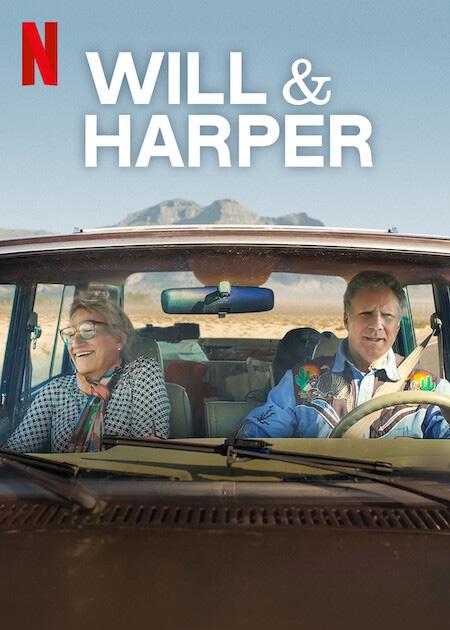
There is an elephant in the room throughout the duo’s road trip, and it is that Ferrell is recognizably famous. This serves as both a blessing and curse throughout, and the two acknowledge the fame that Harper gets to almost hide behind for a while. It is also noted this is far from the “typical” trans experience.
Editing techniques used in this documentary aid in the storytelling by far. The use of comedic timing to lighten the heavy load of sad realities that come with the trans experience but also soften what could be a polarizing and unknown subject for the viewer is excellently achieved.
Steele presents herself with grace as she does not shy away from the unknown throughout the film. Her

way of storytelling to the viewer feels personable, almost like an old friend, and her vulnerability about femininity in all capacities invites a narrative of respect and awe.
Ferrell is seen in a new light by viewers as no longer the comedic centerpiece but in a supporting role of friend and protector. He is the shoulder for Steele to lean on and the humble dinner date every evening.
A tear-jerking comedy arises when this pair finds themselves on screen. Celebrity cameos appear throughout, which have the potential to, but frankly do not, cheapen the documentary, instead showing a community that rallies around the pair as they embark on a unique take of an all-American road trip. “Will and Harper” is a great piece of media for those who may be apprehensive about discovering the LGBTQIA world, and it shows how friendship extends beyond the bounds of a gender binary.
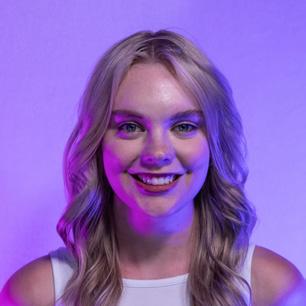
Malory Rau is a junior pursuing a minor in filmstudies. She is often avidly discussing the latest SNL episode or the newest seasonal drink.
— m.rau@usu.edu
